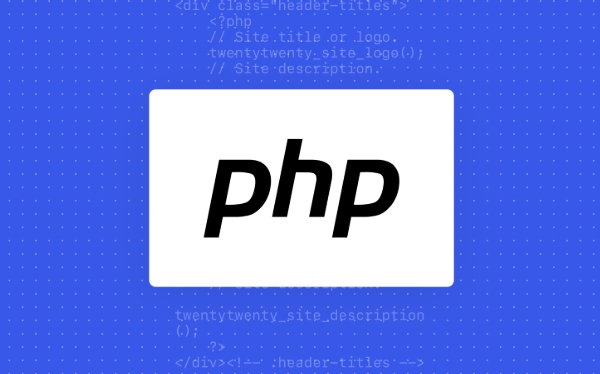 Backend Development
Backend Development
 PHP Tutorial
PHP Tutorial
 Implementing Dynamic Feature Flags with Elegant Conditional Logic
Implementing Dynamic Feature Flags with Elegant Conditional Logic
Implementing Dynamic Feature Flags with Elegant Conditional Logic
Jul 29, 2025 am 03:44 AMMaintainable implementations of dynamic functional flags rely on structured, reusable, and context-aware logic. 1. Structural definition of function flags as first-class citizens, centrally manage them and accompany metadata and activation conditions; 2. Dynamic evaluation is performed based on runtime context (such as user roles, environments, grayscale ratios) to improve flexibility; 3. Abstract reusable conditional judgment functions, such as roles, environments, tenant matching and grayscale release, avoiding duplicate logic; 4. Optionally load flag configurations from external storage, supporting no restart changes; 5. Decouple flag checks from business logic through encapsulation or hooks to keep the code clear. Ultimately achieve the goals of secure release, clear code, fast experimentation and flexible runtime control.

Dynamic feature flags are a powerful tool for shipping code safely, enabling features progressively, and reducing reliability on long-lived branches. But as applications grow, so does the complexity of managing when and to whom features should be enabled. The key to scalable, maintainable feature flagging lies not just in implementation—but in elegant conditional logic that's readable, testable, and excessive.

Let's walk through how to implement dynamic feature flags with clean, expressive logic—without turning your codebase into a maze of if (flag) { ... } statements.
1. Structure Feature Flags as First-Class Citizens
Instead of scattering flag checks across your code, treat feature flags as structured configuration. Define them in a central registry with metadata:

// featureFlags.ts
type FeatureFlag = {
key: string;
isActive: (context: FeatureContext) => boolean;
description: string;
};
type FeatureContext = {
user?: { id: string; role: string; tenantId: string };
environment: 'development' | 'staging' | 'production';
featureRollout?: Record<string, number>; // eg, "searchV2": 0.2
};
const FeatureFlags: Record<string, FeatureFlag> = {
premiumDashboard: {
key: 'premiumDashboard',
description: 'Enables advanced analytics dashboard for enterprise users',
isActive: (ctx) =>
ctx.environment !== 'production' ||
(ctx.user?.role === 'admin' && ctx.user.tenantId.startsWith('ent-'))
},
earlyAccessSearch: {
key: 'earlyAccessSearch',
description: 'Rolls out new search algorithm to 20% of users',
isActive: (ctx) =>
ctx.featureRollout?.earlyAccessSearch > Math.random()
}
};This makes flags composable, self-documenting, and easy to audit.
2. Use Context-Aware Evaluation
Hardcoded flags are brittle. Instead, evaluate flags based on runtime context—user role, environment, percentage rollout, etc.

class FeatureFlagService {
private context: FeatureContext;
constructor(context: FeatureContext) {
this.context = context;
}
isEnabled(flagKey: string): boolean {
const flag = FeatureFlags[flagKey];
if (!flag) return false;
return flag.isActive(this.context);
}
// Bulk check for UI feature toggling
getEnabledFeatures(...keys: string[]): Set<string> {
return new Set(keys.filter(key => this.isEnabled(key)));
}
}Now you can inject dynamic user/environment data at runtime:
const service = new FeatureFlagService({
user: { id: 'u123', role: 'user', tenantId: 'ent-abc' },
environment: 'production',
featureRollout: { earlyAccessSearch: 0.2 }
});
if (service.isEnabled('premiumDashboard')) {
renderPremiumDashboard();
}3. Compose Conditions with Reusable Predicates
Avoid repeating logic like user.role === 'admin' && env !== 'prod' . Extract reusable conditions:
const Conditions = {
isInEnvironment: (...envs: string[]) => (ctx: FeatureContext) =>
envs.includes(ctx.environment),
hasRole: (...roles: string[]) => (ctx: FeatureContext) =>
!!ctx.user && roles.includes(ctx.user.role),
isTenant: (...prefixes: string[]) => (ctx: FeatureContext) =>
!!ctx.user && prefixes.some(p => ctx.user.tenantId.startsWith(p)),
rollOut: (percentage: number) => (ctx: FeatureContext) =>
percentage > Math.random()
};Now your flags become declarative and expressive:
const flags = {
auditLogExport: {
isActive: (ctx) =>
Conditions.isInEnvironment('staging', 'production')(ctx) &&
Conditions.hasRole('admin')(ctx) &&
Conditions.isTenant('ent-')(ctx)
},
newOnboardingFlow: {
isActive: Conditions.rollOut(0.1) // 10% rollout
}
};You can even combine them:
const forEnterpriseAdmins = (condition: (ctx: FeatureContext) => boolean) => ( ctx: FeatureContext ) => Conditions.hasRole('admin')(ctx) && Conditions.isTenant('ent-')(ctx) && condition(ctx); // Usage isActive: forEnterpriseAdmins(Conditions.isInEnvironment('production'))
4. Externalize Configuration (Optional but Powerful)
For large-scale systems, load flag definitions from a database or config service:
interface StoredFlag {
key: string;
enabled: boolean;
rolloutPercent: number;
requiredRole?: string[];
environments?: string[];
}
// Map stored config to runtime logic
function hydrateFlag(flag: StoredFlag): FeatureFlag {
return {
key: flag.key,
description: `Dynamically loaded flag: ${flag.key}`,
isActive: (ctx) => {
if (!flag.enabled) return false;
if (flag.environments && !flag.environments.includes(ctx.environment)) return false;
if (flag.requiredRole && !flag.requiredRole.includes(ctx.user?.role)) return false;
if (flag.rolloutPercent && Math.random() >= flag.rolloutPercent) return false;
return true;
}
};
}Now you can manage flags via UI or CI/CD pipelines—no redeploy needed.
5. Clean Integration with Your App
Avoid polluting business logic. Wrap flag checks in meaningful abstractions:
// Instead of:
if (featureService.isEnabled('newCheckout')) { ... }
// Do:
function renderCheckout() {
if (useNewCheckout()) {
return <NewCheckout />;
}
return <LegacyCheckout />;
}
function useNewCheckout(): boolean {
const features = useContext(FeatureFlagContext);
return features.isEnabled('newCheckout');
}Or in React, use a hook:
function useFeature(flagKey: string): boolean {
const { flags } = useFeatureFlagContext();
return flags.isEnabled(flagKey);
}Final Thoughts
Elegant conditional logic isn't about cleverness—it's about clarity, reuse, and control . By treating feature flags as first-class, context-aware, composable behaviors, you gain:
- Safer rollouts
- Cleaner code
- Faster experimentation
- Runtime flexibility
And most importantly—you avoid the dreaded if (featureX && !isProd || user.beta) && Math.random() spaghetti.
Basically: define once, compose often, evaluate contextually. That's the path to dynamic, maintainable feature flags.
The above is the detailed content of Implementing Dynamic Feature Flags with Elegant Conditional Logic. For more information, please follow other related articles on the PHP Chinese website!

Hot AI Tools

Undress AI Tool
Undress images for free

Undresser.AI Undress
AI-powered app for creating realistic nude photos

AI Clothes Remover
Online AI tool for removing clothes from photos.

Clothoff.io
AI clothes remover

Video Face Swap
Swap faces in any video effortlessly with our completely free AI face swap tool!

Hot Article

Hot Tools

Notepad++7.3.1
Easy-to-use and free code editor

SublimeText3 Chinese version
Chinese version, very easy to use

Zend Studio 13.0.1
Powerful PHP integrated development environment

Dreamweaver CS6
Visual web development tools

SublimeText3 Mac version
God-level code editing software (SublimeText3)

Hot Topics
 Harnessing Short-Circuit Evaluation in PHP's Logical Operators
Jul 29, 2025 am 05:00 AM
Harnessing Short-Circuit Evaluation in PHP's Logical Operators
Jul 29, 2025 am 05:00 AM
Short circuit evaluation is an important feature of logic operators in PHP, which can improve performance and avoid errors. 1. When using &&, if the left operand is false, the right operand will no longer be evaluated; 2. When using ||, if the left operand is true, the right operand will be skipped; 3. It can be used to safely call object methods, such as if($user&&$user->hasPermission('edit')) to avoid empty object calls; 4. It can optimize performance, such as skipping expensive function calls; 5. It can provide default values, but please note that || is sensitive to falsy values, and you can use the ?? operator instead; 6. Avoid placing side effects on the right side that may be skipped to ensure that key operations are not short-circuited. just
 Mastering Strict vs. Loose Comparisons in PHP Conditionals
Jul 29, 2025 am 03:05 AM
Mastering Strict vs. Loose Comparisons in PHP Conditionals
Jul 29, 2025 am 03:05 AM
Using == for strict comparison will check the value and type at the same time, and == will perform type conversion before comparing the value; therefore 0=='hello' is true (because 'hello' is converted to an integer is 0), but 0==='hello' is false (different types); common traps include '0'==false, 1=='1abc', null==0 and []==false are all true; it is recommended to use === by default, especially when processing function return value (such as strpos), input verification (such as the third parameter of in_array is true), and state judgment to avoid unexpected results caused by type conversion; == is only used when it is clearly necessary to use ==, otherwise
 Secure by Design: Using if Statements for Robust Input Validation
Jul 30, 2025 am 05:40 AM
Secure by Design: Using if Statements for Robust Input Validation
Jul 30, 2025 am 05:40 AM
InputvalidationusingifstatementsisafundamentalpracticeinSecurebyDesignsoftwaredevelopment.2.Validatingearlyandoftenwithifstatementsrejectsuntrustedormalformeddataatentrypoints,reducingattacksurfaceandpreventinginjectionattacks,bufferoverflows,andunau
 Improving Code Readability with Guard Clauses and Early Returns
Jul 29, 2025 am 03:55 AM
Improving Code Readability with Guard Clauses and Early Returns
Jul 29, 2025 am 03:55 AM
Using guard clauses and early return can significantly improve code readability and maintainability. 1. The guard clause is a conditional judgment to check invalid input or boundary conditions at the beginning of the function, and quickly exit through early return. 2. They reduce nesting levels, flatten and linearize the code, and avoid the "pyramid bad luck". 3. Advantages include: reducing nesting depth, expressing intentions clearly, reducing else branches, and facilitating testing. 4. Commonly used in scenarios such as input verification, null value check, permission control, and empty collection processing. 5. The best practice is to arrange the checks in order from basic to specific, focusing on the function start part. 6. Avoid overuse in long functions causing process confusion or causing resource leakage in languages that require resource cleaning. 7. The core principle is: check as soon as possible and return as soon as possible
 Refactoring the Pyramid of Doom: Strategies for Cleaner PHP if Blocks
Jul 29, 2025 am 04:54 AM
Refactoring the Pyramid of Doom: Strategies for Cleaner PHP if Blocks
Jul 29, 2025 am 04:54 AM
Useearlyreturnstohandlepreconditionsandeliminatedeepnestingbyexitingfastonfailurecases.2.Validateallconditionsupfrontusingadedicatedhelpermethodtokeepthemainlogiccleanandtestable.3.Centralizevalidationwithexceptionsandtry/catchblockstomaintainaflat,l
 Implementing Dynamic Feature Flags with Elegant Conditional Logic
Jul 29, 2025 am 03:44 AM
Implementing Dynamic Feature Flags with Elegant Conditional Logic
Jul 29, 2025 am 03:44 AM
Maintainable implementations of dynamic functional flags rely on structured, reusable, and context-aware logic. 1. Structural definition of function flags as first-class citizens, centrally manage and accompany metadata and activation conditions; 2. Dynamic evaluation is performed based on runtime context (such as user roles, environments, grayscale ratios) to improve flexibility; 3. Abstract reusable condition judgment functions, such as roles, environments, tenant matching and grayscale release, avoiding duplicate logic; 4. Optionally load flag configurations from external storage, supporting no restart changes; 5. Decouple flag checks from business logic through encapsulation or hooks to keep the code clear. Ultimately achieve the goals of secure release, clear code, fast experimentation and flexible runtime control.
 Performance Deep Dive: if-elseif-else vs. switch in Modern PHP
Jul 29, 2025 am 03:01 AM
Performance Deep Dive: if-elseif-else vs. switch in Modern PHP
Jul 29, 2025 am 03:01 AM
Switch is usually faster than if-elseif-else, especially when there are more than 5 discrete values and PHP can be optimized to skip tables; 2. If-elseif is more suitable for complex or range condition judgments; 3. The performance of the two is similar when a small number of conditions (1–3); 4. Turn on Opcache to improve the optimization opportunities of switches; 5. Code readability is preferred, and it is recommended to use PHP8.0 match expressions in simple mapping scenarios because they are simpler and have better performance.
 Yoda Conditions in PHP: A Relic of the Past or a Valid Defensive Tactic?
Jul 30, 2025 am 05:27 AM
Yoda Conditions in PHP: A Relic of the Past or a Valid Defensive Tactic?
Jul 30, 2025 am 05:27 AM
Yodaconditionsaremostlyarelicofthepast,butstillhavelimitedvalidityinspecificcontexts;theyoriginatedtopreventaccidentalassignmentbugs,suchasif($answer=42),byreversingtheordertoif(42===$answer),whichcausesafatalerrorif=ismistakenlyused;however,modernPH





